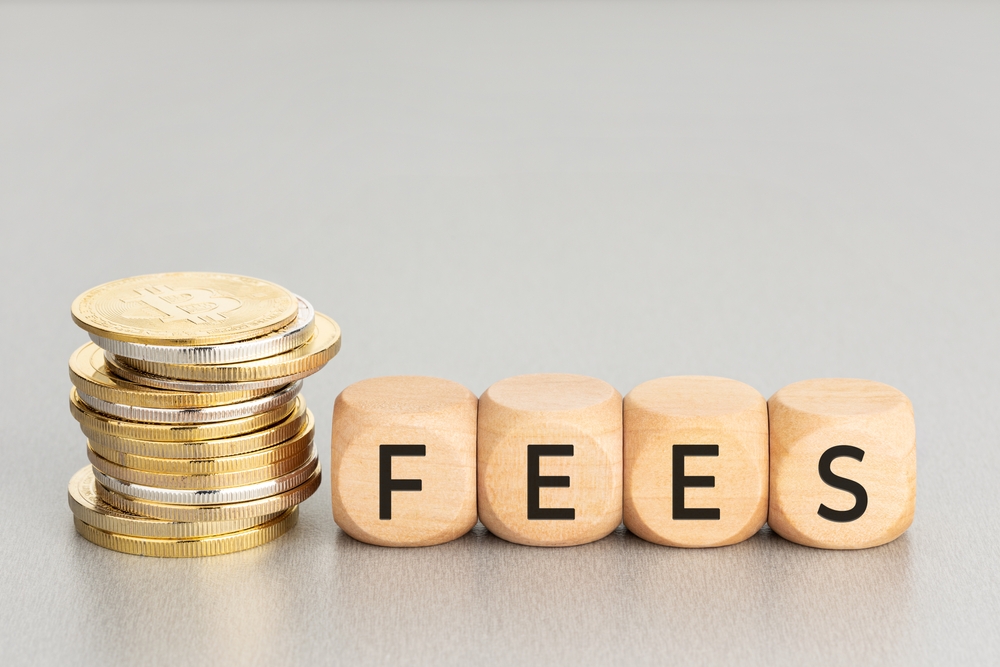Rising Protocol Fees: A Sign of Sustainable Business Models in Crypto?

In the world of cryptocurrency, the recent surge in protocol fees is sparking intense debates about whether this trend is paving the way for a more sustainable future or setting us back by limiting access and hindering growth. As the costs to transact on blockchain networks steadily climb, we’re forced to reevaluate the essence of crypto business models. Is this financial shift a necessary pain that will lead to more robust, efficient platforms capable of handling increased user demand? Or is it a stumbling block that could potentially alienate a significant portion of the crypto community, putting us at risk of losing sight of the very principles that made blockchain technology so revolutionary in the first place? Let’s unravel this complex issue together, exploring how businesses can navigate these rough waters without sacrificing user experience or their own bottom line.
Crypto Business Models and the Rising Tide of Protocol Fees

The cryptocurrency world is diverse, encompassing various business models from interest-earning on crypto deposits, offering white-label solutions, to charging transaction fees. However, as protocol fees increase, it prompts us to question whether this trend signifies a move towards more sustainable operations or if it poses challenges that could hinder the growth of these models.
The Reality of Rising Crypto Fees
So, why are protocol fees, including those for Bitcoin, on the rise? One primary factor is network congestion. As more users and transactions flock to a blockchain, the resources to process and validate these transactions become more scarce, driving up the fees. This scenario isn’t just limited to Bitcoin; other networks are also feeling the pressure.
The Impact of High Fees on Crypto Transactions
But what does this mean for the end-users and their transactions? High fees can significantly impact users, especially those making small, frequent transactions, as the cost can quickly become prohibitive. This situation poses a crucial question for businesses operating within these networks: How can they maintain a balance between profitability and user accessibility?
- User retention: Will high fees drive away long-term users looking for cost-effective transaction options?
- Business model evolution: How will rising fees influence the strategic direction of crypto businesses?
- Blockchain innovation: Could this financial pressure encourage the development of more efficient, scalable blockchain solutions?
The answers to these questions are not straightforward, but they are essential in predicting how sustainable crypto business models will adapt and evolve in response to rising fees. As we explore further, we’ll uncover more about the complex interplay between sustainability, profitability, and user experience in the crypto world.
What does all this mean for the sustainability of cryptocurrencies and their business models? Stay tuned for the next part of our exploration, where we’ll dive into the intricate relationship between fees, resources, and the quest for sustainability in the crypto universe. Can a balance be struck that benefits both the planet and the profit margins? Let’s find out together.
Sustainability in the Crypto Universe

Figuring out what makes a cryptocurrency sustainable often feels like piecing together a massive, digital jigsaw puzzle. Yet, a curious piece of this puzzle seems to be directly linked to the notion of fees. But how exactly are fees and sustainability connected in the vast, bewildering expanse of the crypto universe?
Resources and Sustainability in the Cryptocurrency World
Let’s break it down. The cryptocurrency world is famed for its revolutionary technology—blockchain. Yet, this innovation doesn’t come without its own hefty price tag, especially in terms of resource consumption. Think electricity, water, and even digital real estate. These resources, while vital for the operation and security of blockchains, also spark an intense debate on sustainability.
- Electricity: The electricity consumption of networks like Bitcoin is, without exaggeration, astronomical. But it’s not just about the raw power being used; it’s about where this power comes from and the impact it has on our planet.
- Water and Other Resources: Beyond electricity, the manufacturing and maintenance of hardware for mining operations consume vast amounts of water, metals, and more, forming another layer of the sustainability challenge.
The complex interweaving of these resources underscores a critical question: Can we truly deem a cryptocurrency sustainable if its existence pressures these already strained resources?
The Challenge of Balancing Sustainability and Profitability in Crypto
On the flip side of the sustainability coin lies profitability, a core pursuit for virtually every cryptocurrency operation. After all, high protocol fees can be a significant revenue stream, facilitating growth and innovation within the space. Yet, this introduces a delicate balancing act.
“In the rush to secure profit, it’s easy to forget the footprints we leave behind, both digital and ecological.”
How do cryptocurrency businesses manage this tightrope walk between profitability—bolstered by increasing protocol fees—and the urgent need for sustainable practices? The answer is not straightforward and varies from one model to another. But at its core, it involves innovating ways to reduce resource consumption while maintaining, or even increasing, profitability.
Striking this balance is a critical challenge facing the industry. As fees continue to rise, the pressure on businesses to justify their sustainability credentials in the face of potentially increased resource consumption also escalates.
So, where does this leave us? As fees inch higher, are we moving towards a more sustainable cryptocurrency ecosystem, or are we merely fuelling a cycle of profit at the expense of our planet? The answer is complex and multifaceted, perhaps even more so than the blockchain technology itself.
Stay tuned, as we delve deeper into the specifics of high BTC fees and what this signifies for the cryptocurrency world in the next segment. Could the answer to our sustainability puzzle lie within these rising fees?
Reasons for High BTC Fees and Their Implications

In the ever-evolving landscape of the cryptocurrency world, Bitcoin (BTC) fees have become a topic of hot debate. But why are these fees climbing, and what does this mean for the broader crypto ecosystem? Let’s unpack the complex nature of BTC fees, looking at everything from market dynamics to the implications these costs hold for future users.
Demand vs. Supply: The Core Reason for High BTC Fees
At the heart of the rising BTC fees lies a simple economic principle: demand versus supply. As more people venture into the Bitcoin network, wanting to transfer or trade their BTC, the demand for transaction processing power escalates. However, the Bitcoin network has a limited processing capacity, capped by the block size and the time it takes to mine a new block. This limitation creates a bottleneck, especially during peak transaction periods. Think of it as trying to funnel a vast amount of water through a small pipe; only so much can get through at a time.
- Increased Adoption: With the rising interest in Bitcoin as an investment and medium of exchange, more transactions are queued up, waiting for miners to process.
- Finite Supply of Block Space: Each Bitcoin block has a finite space, leading to a competitive market where transactions with higher fees are prioritized.
Rising Protocol Fees: A Hindrance or a Necessity?
High fees can be seen as both a barrier and a necessity within the cryptocurrency ecosystem. On one hand, they can deter new or small-scale users from using Bitcoin, potentially limiting its adoption and utility. Imagine a new investor, eager to enter the , being put off by the high transaction costs. On the other hand, higher fees incentivize miners to continue securing the network, an essential aspect for the robust functioning of the Bitcoin system.
“In a world where everything has a price, the value of security and trust is often underestimated until it’s compromised.” — Unknown
This quote beautifully captures the essence of protocol fees in Bitcoin. While we might bemoan the cost of transactions, we must remember that these fees play a critical role in maintaining the integrity and security of the blockchain. Without adequate compensation, miners might be less motivated to process transactions, which could compromise the security and functionality of the entire Bitcoin network.
So, are these rising protocol fees a necessary evil for the longevity and health of the Bitcoin ecosystem, or do they represent a significant barrier to entry that could stifle growth and adoption? It’s a complex issue, and perspectives vary widely depending on whether one views the crypto world from a user, miner, or investor standpoint.
The debates around these fees point to a larger question within the crypto community—how can we balance scalability, security, and accessibility? As we transition into exploring the crypto transaction fees in more detail, it’s worth pondering: Is there a middle ground that satisfies all stakeholders, or are we facing an inevitable trade-off between these crucial aspects?
Stay tuned as we delve deeper into what crypto network fees and transaction fees entail for the ecosystem in the next section. Perhaps, within the intricate balance of supply and demand, lies a solution that could harmonize these conflicting interests.
Understanding Crypto Transaction Fees

Ever wondered why sending Bitcoin or Ethereum sometimes feels like you’re paying for a premium cup of coffee, price-wise? You’re not alone. The world of crypto transaction fees can often feel like navigating a labyrinth, with each step revealing a new layer of complexity. Today, let’s take a casual stroll through this landscape, unraveling the secrets behind these fees and what they mean for the broader ecosystem.
The Role of Network Congestion in Fee Determination
Imagine you’re trying to get a seat at the hottest restaurant in town. The more crowded it is, the longer you’ll wait or the more you’ll pay for a reservation. Similarly, in the crypto world, network congestion plays a significant role in determining fees. When too many transactions are vying for validation, miners prioritize those with higher fees attached, leading to an increase in transaction costs. This phenomenon isn’t just a minor inconvenience; it shapes user experience and strategic decision-making for crypto projects. Let’s see how:
- Urgency vs. Economy: Users must decide between paying a premium for faster confirmation or opting for lower fees and longer waits.
- Network Upgrade Considerations: High congestion and fees can accelerate the development and adoption of network improvements, such as Ethereum’s transition to proof-of-stake (PoS) with its promise of scalability and reduced fees.
The Ever-Changing Landscape of Crypto Fees
Looking back, we’ve witnessed a fascinating evolution in crypto fees. From negligible amounts to record highs during peak periods, this fluctuation tells a story of growing adoption and technological strides. Consider the Bitcoin network, where fee patterns offer insight into market sentiment, mining dynamics, and even regulatory impacts across the globe. A snapshot from history shows us the dramatic surge in fees during the 2017 bull run, followed by a stabilization phase as the network adjusted with solutions like Segregated Witness (SegWit) and the Lightning Network.
“In the world of cryptocurrency, the only constant is change.”
This quote encapsulates the journey of transaction fees over the years. But it’s not just about looking back; it’s about understanding the now, to navigate the future. With ongoing developments in layer 2 solutions and other scalability technologies, are we heading towards a new era of lower, more predictable fees?
As we stand at the crossroads of technological advancement and user experience, one must wonder: What does the future hold for crypto transaction fees? Will the solutions in development today ease the fee pressure, making crypto more accessible and affordable for daily transactions? Stay tuned, as we continue to explore this intriguing topic in the upcoming segments. Your journey through the intricate world of crypto fees is just beginning, and the answers may surprise you.
Analyzing Recent Trends in Protocol Fees

When we talk about the heartbeat of the crypto world, protocol fees often don’t get the spotlight they deserve. Yet, they play a pivotal role in maintaining the ecosystem’s health and sustainability. But, what’s going on with these fees lately? Let’s peel back the layers and check out the latest trends that are shaping the future of cryptocurrency businesses.
What Rising Bitcoin Transaction Fees Indicate
It’s no secret that Bitcoin transaction fees have been on a rollercoaster ride. But why the constant up and down? A surge in fees often signals a bustling network, brimming with transactions waiting to be mined. This could be seen as a sign of robust blockchain security, an aspect critical to the trust and reliability users place in the system. According to an analysis shared by resources such as The Street, these increasing fees can also reflect growing investor interest and engagement with Bitcoin. Yet, it begs the question: how sustainable is this model if the cost continues to escalate?
The Connection between Protocol Fees and Sustainable Crypto Business Models
The ongoing debate about rising protocol fees and their impact on sustainable business models in cryptocurrency is heating up. Higher fees can mean greater rewards for miners, potentially leading to a more secure and decentralised network. But there’s another side to this coin – the quest for sustainable crypto business models. Rising fees challenge businesses to innovate, carving out models that can withstand these fluctuations without passing on costs to the end user. This balancing act between maintaining profitability and ensuring user affordability might just be the catalyst needed for a wave of innovation in crypto business practices.
Key trends emerging in this area have been highlighted in studies and reports, such as those found on Science Direct, showing how businesses are adapting. From implementing layer 2 solutions to reduce transaction costs to exploring alternative consensus mechanisms that don’t require hefty fees, the evolution is on.
“The art of progress is to preserve order amid change and to preserve change amid order.” – Alfred North Whitehead
As this quote encapsulates, the crypto ecosystem is navigating through its growing pains by finding equilibrium between maintaining its foundational ethos and adapting to economic realities.
So, as we observe the landscape of rising protocol fees, it’s essential to wonder: How will this influence the next generation of crypto businesses? Will the need for sustainability and user affordability drive more innovation in the space, leading to a transformative shift in how we perceive transaction fees?
Stay tuned as we explore differing opinions and predictions that paint a vision of the future in the next part of our series. Will protocol fees be the Achilles’ heel or the golden key for the crypto industry? The answer may just surprise you.
Expanding the Discussion: Opinions and Predictions

Welcome back to our ongoing conversation about the evolving landscape of cryptocurrency fees. Today, we’re broadening our perspective to encompass a range of opinions and informed predictions on what the future might hold for protocol fees. This aspect is not only intriguing but critical to understanding the broader implications for the crypto industry.
The Diverse Opinions Surrounding Rising Protocol Fees
Rising protocol fees have sparked a vigorous debate among stakeholders in the crypto community. Some see these fees as a necessary evolution to ensure the scalability and security of networks. Others argue they could stifle innovation and deter new users. By taking a closer look at various insights from experts and everyday crypto users, we unveil a tapestry of perspectives that shed light on the complexity of this issue.
Resources such as The Street highlight how rising Bitcoin fees are indicative of the network’s robustness and growing demand. Conversely, research from ScienceDirect points to the impact of fees on network participation rates. The dialogue between these contrasting views offers a rich field for exploration and understanding.
Where Are We Headed? Predictions about the Future of Protocol Fees
Speculating the future is always a mix of educated guesses and wishful thinking. However, in the realm of cryptocurrency, ongoing developments provide us with a glimpse into what might lie ahead. For instance, a recent report from CoinDesk noted a significant surge in Bitcoin fees, attributed to a resurgence in popularity of specific applications on the blockchain. This trend invites us to question: what other innovations will shape the cost of transacting on crypto networks?
Foreseeing the future of protocol fees involves understanding both the technical advancements in blockchain technology and the socio-economic factors at play. Will we see a move towards more efficient, low-cost protocols, or could fees continue to rise as networks reach their capacity? It’s a fascinating conversation, one that promises to evolve as dynamically as the technology itself.
So, what does all this mean for the sustainability and growth of crypto businesses? The answer to this question is multi-faceted and still unfolding. But one thing is certain—the conversation about protocol fees is far from over. As we delve deeper into this topic, we uncover more questions than answers. What impact will rising fees have on the decentralization of the crypto space? How will this influence the strategies of existing and aspiring crypto businesses?
Stay tuned, as we explore these questions and more in our final discussion. The insights gleaned from this conversation promise to illuminate the path forward for the cryptocurrency industry. Will rising protocol fees usher in a new era of sustainability and growth, or could they present unforeseen challenges? The answer lies ahead.
Rising Protocol Fees: A New Reality for Crypto Businesses

The conversation around protocol fees in the cryptocurrency ecosystem has been intense, and for a reason. Today, I want to zero in on what these rising fees mean for the sustainability of crypto businesses and how it sketches the future landscape for all players, both big and small.
Evaluating the Implications of High Fees on Crypto Transactions
First off, let’s look at the elephant in the room – the high cost of crypto transactions. These aren’t just numbers. They’re a reflection of the challenges and opportunities within the market. A study revealed that when Ethereum gas fees spiked, it both discouraged casual transactions and encouraged the development of more efficient protocols. Similarly, Bitcoin has seen its fair share of fee surges, affecting transaction patterns and pushing for innovations in transaction batching, and off-chain solutions like the Lightning Network.
High fees can be a double-edged sword. On one hand, they signal a network under heavy demand, indicating a thriving ecosystem. On the other, they can sideline small-time investors and disrupt daily transactions. Businesses, especially those in the DeFi space, have to adapt swiftly – either by incorporating fee-minimizing strategies or by exploring alternative networks that offer lower costs.
A New Paradigm: Rising Fees and Sustainable Crypto Businesses
In this evolving landscape, rising fees are not just hurdles; they are also harbingers of a new paradigm. They prompt a reconsideration of what a sustainable crypto business looks like. Sustainability here isn’t just about enduring but evolving. Projects like Ethereum 2.0, with its shift to Proof of Stake (PoS), illustrate a pivot towards scalability and efficiency, thus potentially lowering fees over time.
Moreover, businesses are now more than ever focused on building scalable and efficient platforms that can accommodate growth without succumbing to prohibitive costs. This shift is evident in the way new platforms are embracing second-layer solutions, cross-chain bridges, and other technologies designed to streamline transactions and reduce fees.
Signal or Noise: Weighing the Meaning of Rising Protocol Fees
So, where does this leave us? Are rising protocol fees a signal or just noise in the grand scheme of the crypto universe? It’s clear that while they present challenges, there’s a silver lining. These fees are pushing the industry towards innovation, forcing businesses to rethink strategies, prioritize efficiency, and, ultimately, contribute to a more sustainable ecosystem.
In essence, while the rise in protocol fees might seem daunting at first glance, it could very well be the catalyst for growth and sustainability in the crypto business sector. Adaptation and innovation seem to be the keys. As we navigate this terrain, one thing remains certain: the future of crypto isn’t just about surviving the high fees but thriving because of them.
As we draw to a close on this analysis, I’m reminded of the resilience and ingenuity that this space has always shown. High protocol fees are but another challenge in the grand tapestry of the cryptocurrency world, one that, with smart strategies and technological innovation, we are well-equipped to overcome.
